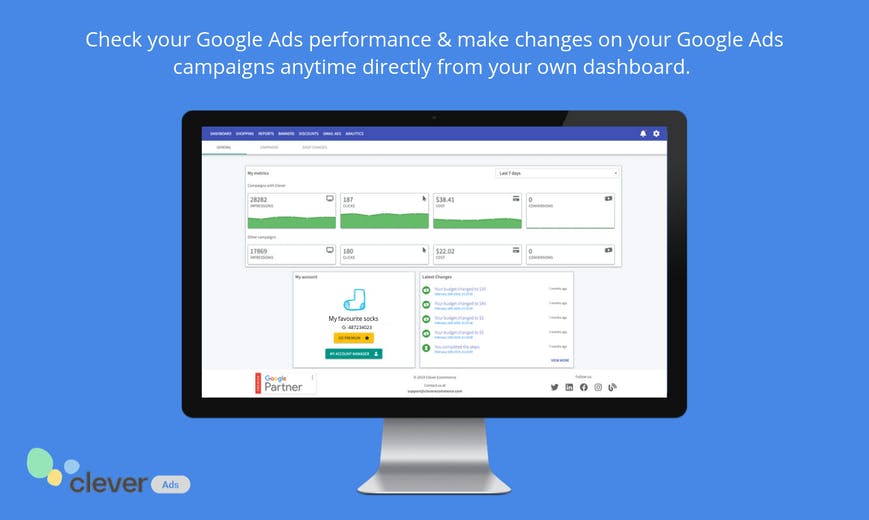
Google Ads are a great tool for startups. However, do you know how they can be used effectively? These are just a few tips: Budgeting and Cost-per-click bid. Conversion rate. Retargeting. This article provides a guide to Google Ads for startups. Learn how to create, maintain and use conversion tracking to increase your results.
Budgeting
Budgeting Google Ads can have many benefits for startups. Budgeting Google Ads for startups is much more affordable than SEO. SEO is an effective way to establish a strong web presence. Google Ads can be setup to make your company appear immediately in the SERP. Google Ads also offers flexible pricing. Google Ads allows you to choose a budget that best suits your marketing budget. You pay only when people click on your ad.
Before budgeting Google Ads in startups, it's important to understand the total cost. Your goal should be maximize ROI or return of investment. To ensure you're not spending too much, calculate the cost of each acquisition and the lifetime worth of each customer. Spend about a third on Google AdWords. Spending more than this can make you appear to be printing money, and not increasing your sales.
Cost-perclick bid

Startups must know what their costs are in order to make the most out of their marketing budget. Google ads typically cost between two to five cents per click. Google offers higher bids, but you need to be aware of the costs associated with advertising for your company before you begin promoting it on the internet. Google ads cost per click bids for startups will be much higher than those of their competitors. You can also adjust the cost per click bid depending on what keyword you are targeting.
Using Google Ads is a great way to generate quality leads. It's a cost-effective way to test your ad copy, and discover what works for you. It's also free to run test campaigns often, which is crucial for startups. Google Ads also allows you to target people who are actively searching for your product. Instead of trying to entice them with an attractive ad, you'll be targeting a group of people who have already expressed interest in your product.
Conversion rate
While there are a lot of ways to improve the conversion rate of Google ads, one of the most effective ways is to test and analyze your ad copy. Continuously testing different copy is the best way to increase your conversion rates. This will allow you to choose which copy best serves your target audience. You may also notice a difference in the results depending on where your ads are placed. You can test different landing pages from different locations for ads that are primarily online.
The industry should be considered first. The lowest conversion rates are found in finance and ecommerce, which are two of the highest performing industries. Even though the conversion rates are low, startups can still make more money in these industries than those in the top performing ones. And the good news is that the average conversion rate in e-commerce is 2.9%. Similar to the previous point, conversion rates may be higher for younger customers than those who are targeting older customers.
Retargeting

Retargeting is a powerful way to reach customers, even if they have not bought anything. Google uses a Google pixel-based system to notify Google when someone visits the website. When they search for similar terms, Google then re-displays advertisements on their screens. Small businesses can benefit greatly from retargeting ads because they work automatically. Google offers two types retargeting advertisements. Each type uses a different strategy for increasing the likelihood of getting customers.
Retargeting marketing originated in eCommerce and is used in all industries. This is a great way to make your existing initiatives more effective and to break into new markets. There are many uses for retargeting in the world of startups. Here are just a few.
FAQ
What can I do to improve my content marketing strategy
Focusing on distribution, audience and content can help improve your content marketing strategy. It is important to first identify your ideal customer. This will help you determine where they live online. Once you know this information, you can tailor your content to appeal to them. The second is to develop a voice and style unique enough to distinguish yourself from your competition. The third step is to determine how to best distribute your content.
How do I create engaging content?
The best way to create great content is to write about something that interests you. If you want to be successful at writing, you need to find topics you are passionate about. This involves understanding your personality and sharing that knowledge with others. It's one thing to write for yourself, but it's much easier to write for others.
How much does content marketing cost?
Prices for content marketing vary depending on whether the solution is outsourced or managed by you. Outsourcing content marketing services are usually cheaper than hiring full-time employees, allowing you to scale quickly when you need more coverage.
HubSpot research shows that outsourcing content production can cost around $5 per lead (for B2B businesses) and $22 per lead (for consumer brands).
However, there are plenty of web resources that provide free content marketing tools that you can use to create engaging content that converts.
There are many ways you can optimize content to be found on search engines like Google and Bing. You have the option to write original articles or guest post on blogs. You can also curate content from different websites and reuse existing materials.
You will need to know how to create great content if you decide to go the self-produced content route. It's easy to create content once you have it down.
It is possible to start with simple landing pages created using WordPress, and then build your site. By doing this, you can gradually build up a portfolio.
Statistics
- According to research compiled by Coschedule: Companies that publish 16+ blog posts a month get as much as 3.5x as much traffic as those that publish 0-4 posts a month. (criteo.com)
- Seventy-two percent business to business (B2B) (mailchimp.com)
- According to the Content Marketing Institute, 70% of B2B marketers and 86% of B2C marketers surveyed use content marketing in some form or other. (criteo.com)
- Out of the 1,500 marketers we surveyed for our State of Content Marketing report, 78% who felt their content marketing strategy was exceptionally effective in 2021 had documented their strategy. (semrush.com)
- In fact, would pay more for a better customer experience, and 86% of B2B buyers would pay more. (neilpatel.com)
- According to our research, brand awareness, attracting traffic, and generating leads remain the key content marketing goals in 2022. (semrush.com)
- Forty-seven percent of buyers view 3 to 5 pieces of content before engaging with a sales representative. (mailchimp.com)
- Companies that use content marketing see approximately 30% higher growth rates than businesses not using it. (mailchimp.com)
External Links
How To
Why create a content marketing plan? Why not now?
You may feel overwhelmed when you first get started with content marketing. The truth is that you don't need all of the tasks at once. Start small.
Take one step at a time. To do too many things at once can lead to burnout and slow progress. Instead, focus on one thing at a time until you've mastered it.
Start Small. Don't be too concerned about perfecting every aspect in your content marketing strategy today. Only focus on one area of content marketing at time. You will become more comfortable as you work harder.
Don't forget to build on your past successes. Your social media following and reputation are already established. Why not use your existing network to help you grow? Reach out to influential people in your industry to ask if your content would be promoted. Or, you can organize an event for bloggers.
Start somewhere even if you've never made content before. Begin with something basic. Perhaps you'll create a blog post, host a webinar, and even hold a live Q&A. No matter what, you should measure its success.